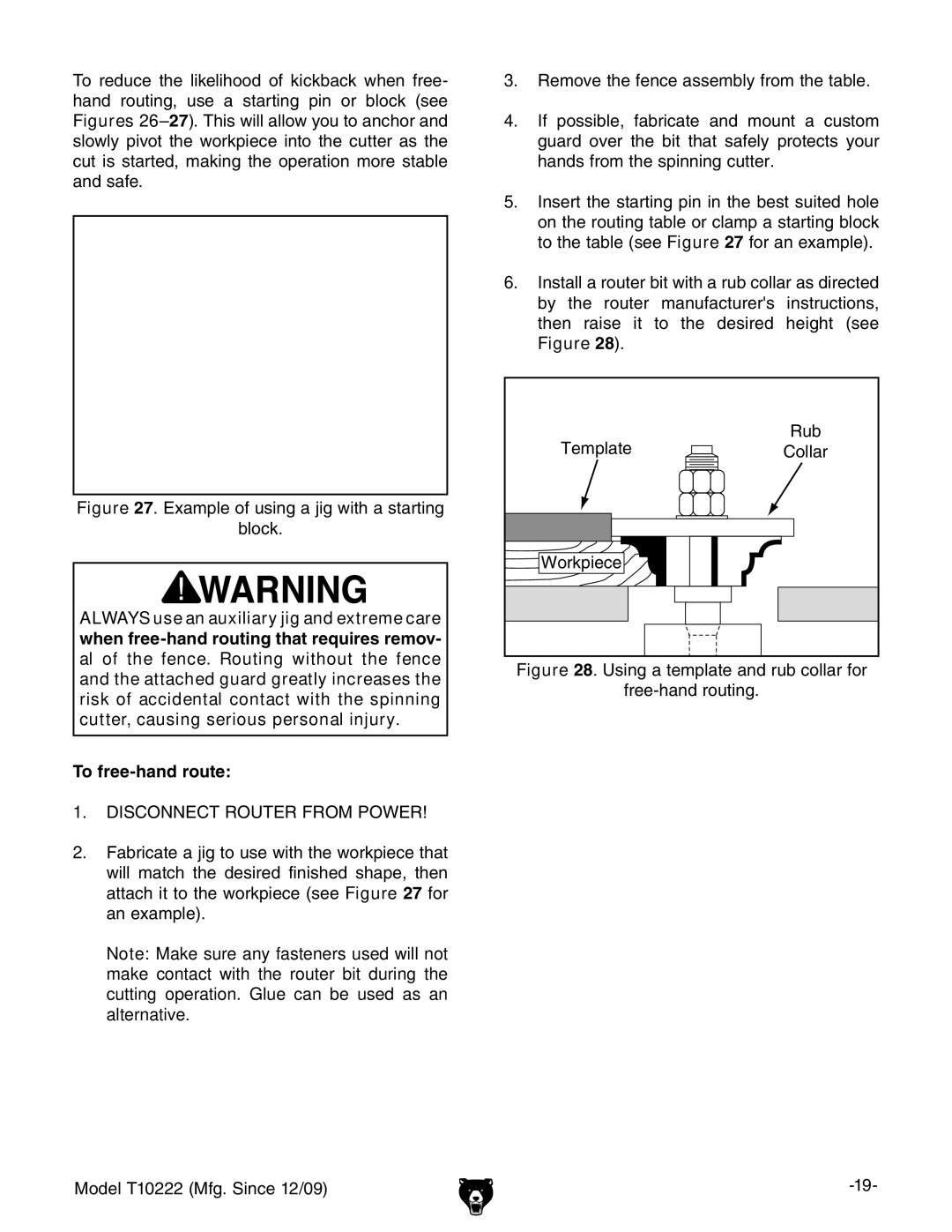
To reduce the likelihood of kickback when free- hand routing, use a starting pin or block (see Figures
Figure 27. Example of using a jig with a starting
block.
ALWAYS use an auxiliary jig and extreme care when
To free-hand route:
1.DISCONNECT ROUTER FROM POWER!
2.Fabricate a jig to use with the workpiece that will match the desired finished shape, then attach it to the workpiece (see Figure 27 for an example).
Note: Make sure any fasteners used will not make contact with the router bit during the cutting operation. Glue can be used as an alternative.
Model T10222 (Mfg. Since 12/09)
3.Remove the fence assembly from the table.
4.If possible, fabricate and mount a custom guard over the bit that safely protects your hands from the spinning cutter.
5.Insert the starting pin in the best suited hole on the routing table or clamp a starting block to the table (see Figure 27 for an example).
6.Install a router bit with a rub collar as directed by the router manufacturer's instructions, then raise it to the desired height (see
Figure 28).
Template | Rub |
Collar | |
Workpiece |
|
